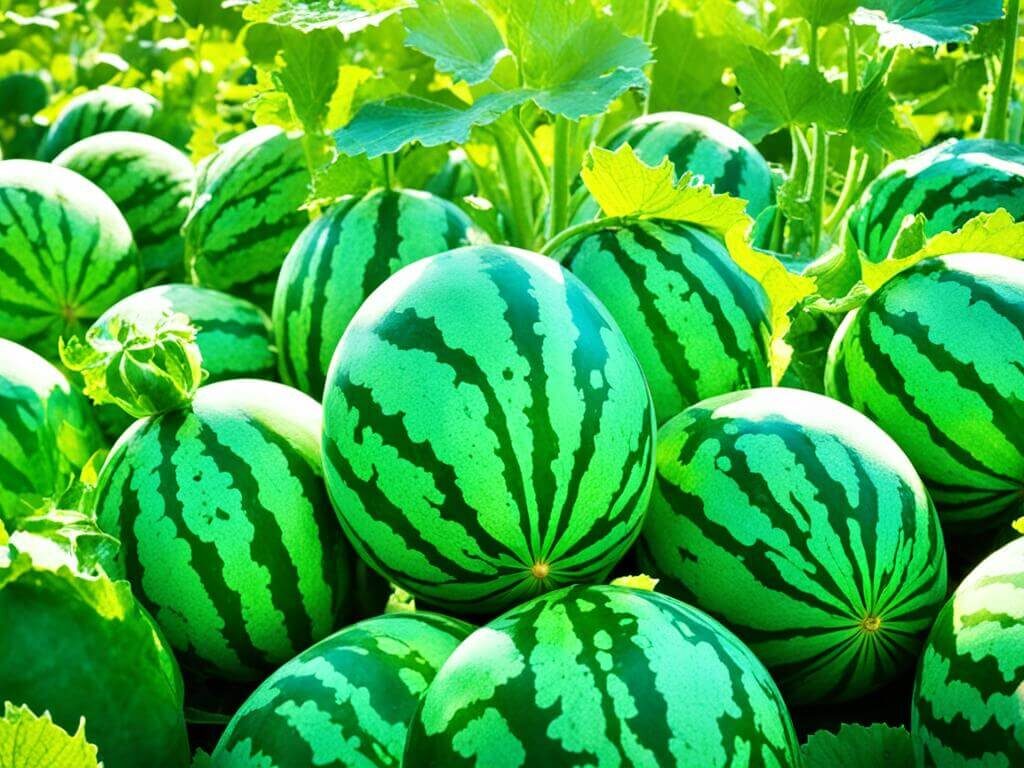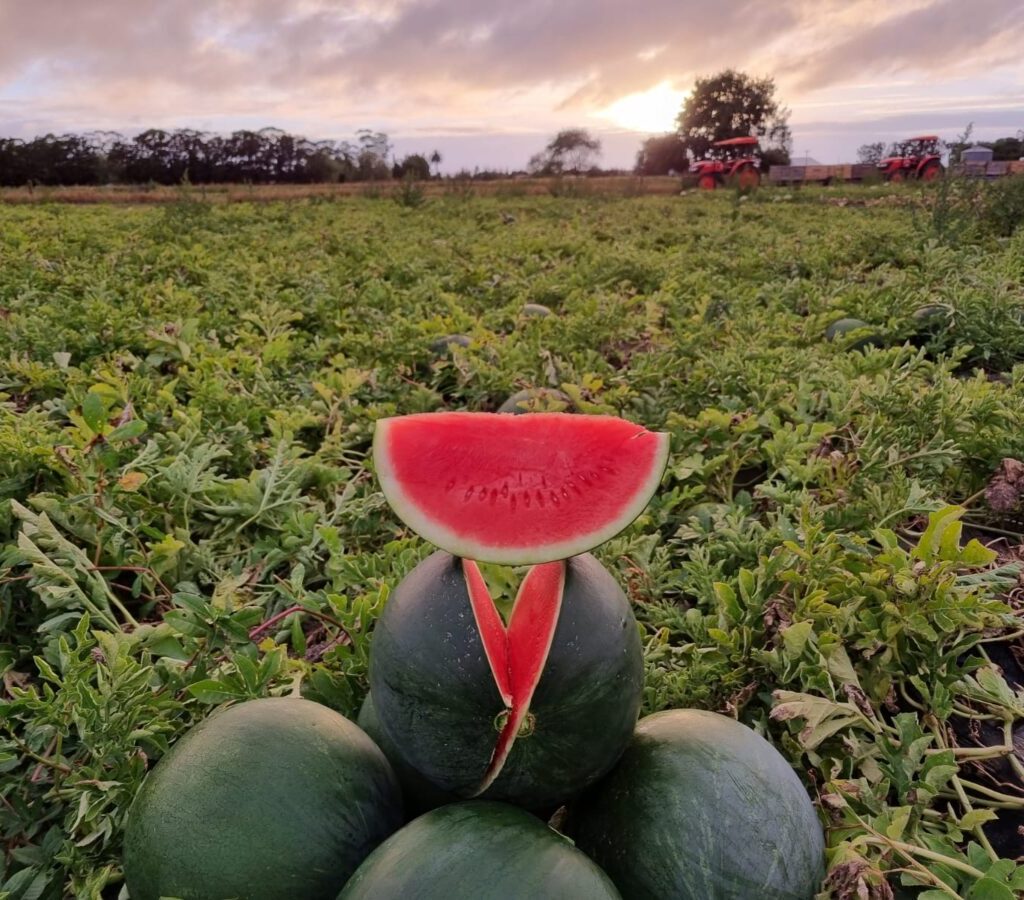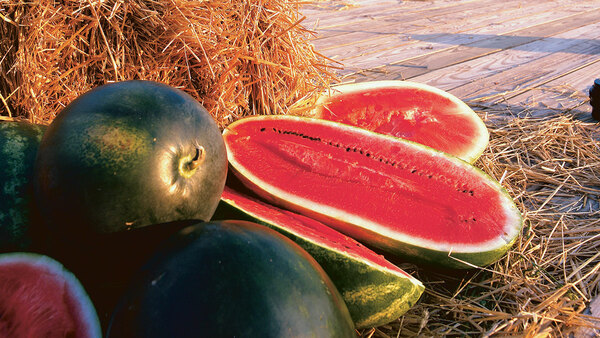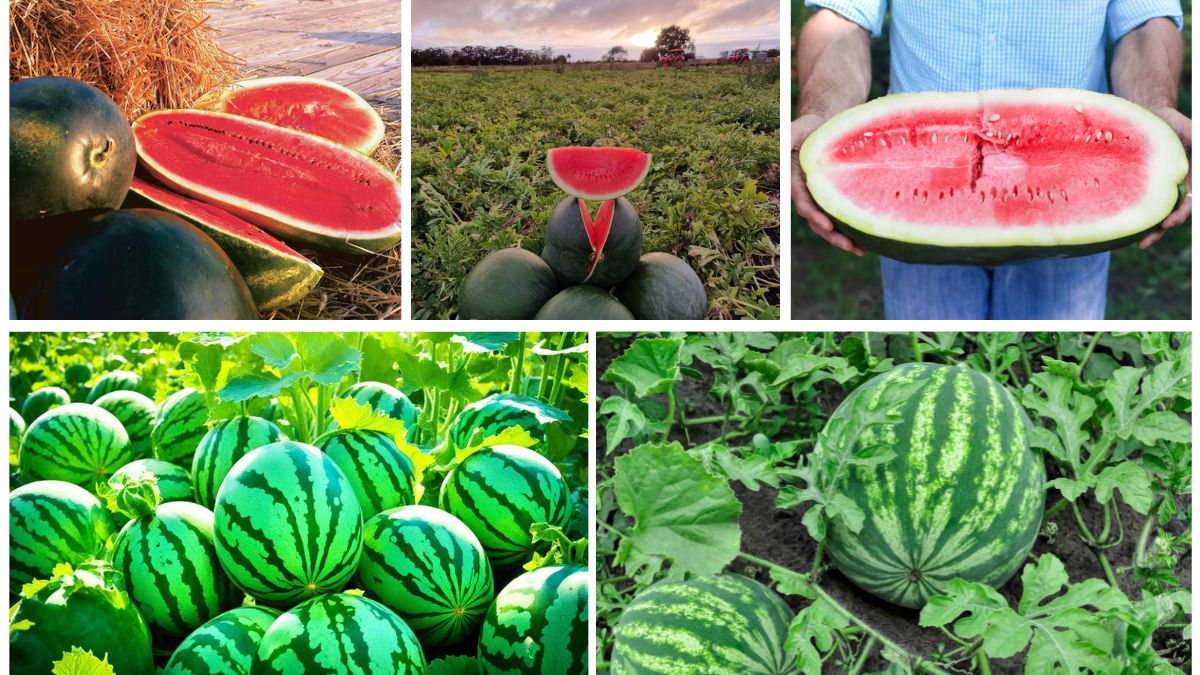Few fruits are as refreshing, juicy, and beloved during summer as watermelons. Their vibrant color, natural sweetness, and high water content make them a perfect treat for hot days. But growing watermelons that are bigger, sweeter, and more flavorful than store-bought varieties requires careful attention, timing, and technique.
In this comprehensive guide, we’ll uncover the secrets to growing bigger, sweeter watermelons, including selecting the right varieties, planting, soil preparation, watering, fertilization, pruning, and harvesting. Whether you’re a beginner gardener or a seasoned grower, these tips will help you achieve a bountiful watermelon harvest.
Why Watermelons Sometimes Fail to Reach Their Potential

Before diving into growing techniques, it’s important to understand why watermelons may not reach their full size or sweetness:
- Poor soil fertility: Watermelons need rich, well-draining soil loaded with nutrients.
- Inconsistent watering: Irregular watering can lead to smaller fruits and poor flavor.
- Crowded plants: Watermelon vines need ample space to spread.
- Improper pollination: Watermelons require bees or manual pollination for full fruit set.
- Wrong variety or climate mismatch: Some varieties perform poorly in unsuitable climates.
By addressing these factors, you can dramatically improve both size and flavor.
Step 1: Choosing the Right Watermelon Varieties

Variety selection is the first step toward bigger, sweeter melons. Different varieties suit different growing regions, vine lengths, and desired fruit sizes.
Popular Varieties for Large, Sweet Fruits
- Sugar Baby: Small to medium-sized, extremely sweet, ideal for limited space.
- Crimson Sweet: Classic large melon with dark green striped rind and deep red flesh.
- Charleston Gray: Produces long, large fruits up to 25 pounds with excellent sweetness.
- Jubilee: Long, striped fruits with firm, sweet flesh, perfect for warm climates.
Tips for Variety Selection
- Consider your growing season length: some large varieties require longer warm periods.
- Look for disease-resistant types to reduce crop loss.
- Choose seedless varieties if you prefer hassle-free fruit, but remember they may require pollination from a seeded variety.
Step 2: Preparing the Soil
Watermelons are heavy feeders, so soil preparation is critical for size and flavor.
Ideal Soil Conditions
- Type: Loose, sandy loam with good drainage. Heavy clay retains too much water and stunts growth.
- pH: Slightly acidic to neutral (6.0–7.0).
- Organic Matter: Incorporate compost, aged manure, or well-rotted garden soil for nutrients and moisture retention.
Preparing the Planting Site
- Choose a sunny spot with at least 8 hours of direct sunlight daily.
- Space hills or mounds 4–6 feet apart to allow vines room to spread.
- Mound soil slightly to improve drainage and prevent root rot.
Step 3: Planting Watermelon Seeds

Watermelons are frost-sensitive, so timing is crucial:
- Sow seeds outdoors 2–3 weeks after the last frost date.
- Plant 2–3 seeds per hill, about 1 inch deep, spacing hills as mentioned above.
- Once seedlings have 2–3 true leaves, thin to the strongest plant per hill.
Starting Seeds Indoors
- In cooler regions, start seeds indoors 3–4 weeks before the last frost to extend the growing season.
- Use peat pots or seed trays with warm soil (70–80°F) for faster germination.
Step 4: Watering for Bigger, Sweeter Fruit

Watering is a major factor in watermelon sweetness.
- Consistent Moisture: Watermelons need deep, steady watering to develop large fruits.
- Avoid Overwatering Near Harvest: Reduce water slightly as fruit matures to concentrate sugars.
- Mulching: Use straw or black plastic mulch to retain moisture, regulate soil temperature, and reduce weeds.
Tip: Drip irrigation works best to deliver water directly to roots without wetting leaves, which helps prevent fungal diseases.
Step 5: Fertilization and Feeding

Watermelons are nutrient-hungry. Proper fertilization can dramatically increase size and sweetness:
- Starter Fertilizer: Apply a balanced fertilizer (10-10-10) when planting.
- Side-Dressing: Once vines begin running, side-dress with nitrogen-rich fertilizer to support leafy growth.
- Flowering Stage: Switch to a potassium and phosphorus-rich fertilizer to encourage flowers and sweet fruit.
- Organic Options: Compost tea, fish emulsion, or well-rotted manure works well to boost nutrients naturally.
Step 6: Pruning and Vine Management
While not mandatory, pruning and managing vines can improve fruit size:
- Pinch Off Excess Flowers: Focus energy on 1–2 fruits per vine for maximum size.
- Remove Weak Vines: Keep the strongest runners to direct nutrients to the main fruit.
- Support Fruits: Place fruits on straw or boards to prevent rot and pest damage.
Tip: Overcrowding can reduce sunlight and airflow, which lowers sweetness and increases disease risk.
Step 7: Pollination
Watermelons require pollination for proper fruit development:
- Bees are essential: Encourage pollinators by planting flowers nearby.
- Hand Pollination: If bee activity is low, gently transfer pollen from male flowers to female flowers using a brush. Female flowers have a small swelling (future fruit) behind the petals.
Step 8: Harvesting Watermelons at Peak Sweetness
Knowing when to harvest is crucial for sweetness:
Signs That Watermelons Are Ripe
- Tendril Drying: The curly tendril closest to the fruit dries out.
- Ground Spot Color: The area where the fruit rests on the soil turns creamy yellow.
- Skin Texture: Rind becomes dull and hard to scratch with your fingernail.
- Sound Test: Tap the fruit; a deep, hollow sound indicates ripeness.
Tips for Harvest
- Cut the fruit with a sharp knife, leaving 1–2 inches of stem attached.
- Handle carefully to avoid bruising, which can affect flavor and shelf life.
Step 9: Maximizing Fruit Sweetness
- Sunlight: Ensure fruits get full sun exposure; shade reduces sugar content.
- Consistent Care: Maintain steady watering and nutrient supply.
- Harvest Timing: Picking too early results in bland, underdeveloped flavor; patience pays off.
Common Challenges and How to Overcome Them
- Pests: Aphids, cucumber beetles, and squash bugs can attack vines. Use neem oil or hand-pick insects.
- Diseases: Powdery mildew and fusarium wilt are common; improve airflow, rotate crops, and use resistant varieties.
- Small Fruits: Usually caused by overcrowding, insufficient sunlight, or lack of nutrients. Thin fruits and provide fertilizer for better size.
Extra Tips for Growing Award-Winning Watermelons
- Soil Testing: Check nutrient levels and pH before planting.
- Spacing Matters: Allow vines ample space; cramped plants produce smaller fruits.
- Companion Plants: Marigolds and nasturtiums can help repel pests naturally.
- Experiment With Varieties: Try sugar-enhanced or heirloom types for extraordinary sweetness.
- Regular Monitoring: Check for pests, diseases, and nutrient deficiencies weekly.
Final Thoughts
Growing bigger, sweeter watermelons is a rewarding challenge that combines science, patience, and attention to detail. By selecting the right varieties, preparing nutrient-rich soil, managing water and fertilizer carefully, supporting your vines, and timing the harvest correctly, you can enjoy juicy, flavorful watermelons that far surpass store-bought fruit.
With proper care and a little dedication, your garden can produce impressive, sweet watermelons that will be the centerpiece of summer picnics, desserts, and family gatherings. The secret lies in consistent care, smart planning, and a little gardener’s intuition—and the satisfaction of biting into a homegrown, perfectly sweet watermelon makes every effort worthwhile.





